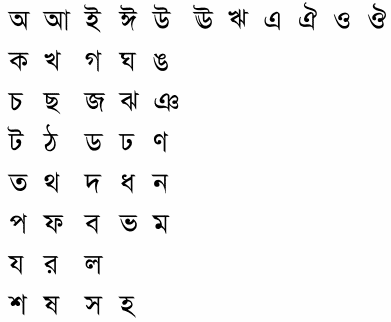
#Bangla font software#
As software packages get more sophisticated and rely less on the user´s familiarity with hardware, they become more and more ´help-driven´, that is, they come with self-explanatory text included in the package, which can be accessed while running an application. There are other problems as well associated with the teaching of software skills in the Subcontinent. Even in the city of Calcutta, where one would expect competition and publicity to impose some quality control, the situation is not much better. Most of these centres own substandard machines running obsolete software, the trainers themselves may not be more advanced than last semester´s ´graduates´, and all this for fees that are generally exorbitant. Yet, judging by the rash of computer tutorial homes and training centres coming up all over the mofussil, one would think West Bengal was churning out software professionals like roshogollas. (Bangla does not read well in Roman letters and for some reason South Asian scripts take ages to download.) Nor has it made a big impact on the informal republic of the Internet, though Bengali cultural sites abound. The momentum was lost over the course of time, however, and Bangla in this century has failed either to develop new, usable fonts for the modern age, or make a successful transition to the virtual space of digital text.


The letterpress font (in lead type) in its basic form as we have it today ingeniously solved many of the problems associated with Bangla orthography – the fact that the unit of Bangla writing is the syllable rather than the letter, for example. A burst of creativity at the beginning of the 19th century led to great advancements in Bangla printing. A substantial amount of water has flowed down the Hooghly since the days when Sir William Carey and Panchanan Karmakar developed the first Bengali font.


 0 kommentar(er)
0 kommentar(er)
